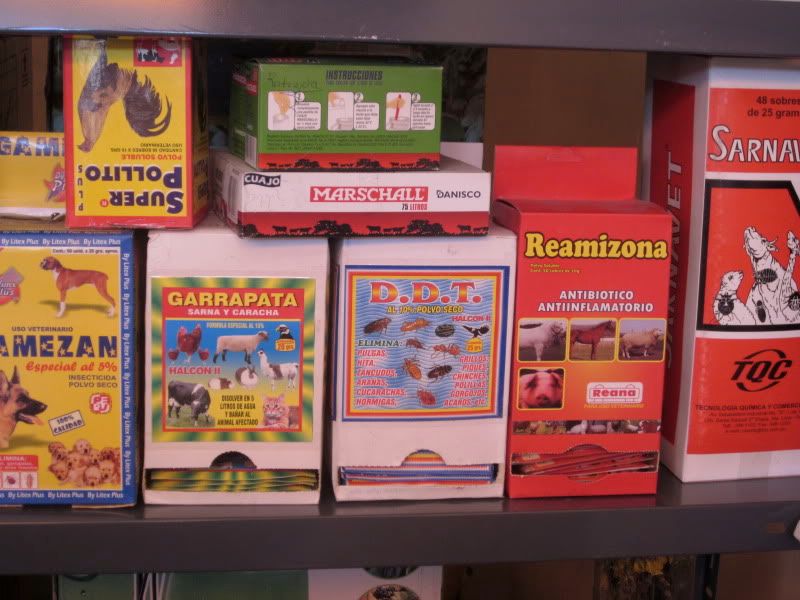
This diary covers the town of Achacachi, a small town in the Bolivian highlands where our group stopped for a bathroom break while en route to Santiago de Okola, an indigenous community on the northern shore of Lake Titicaca that we spent a few days with. I took the picture of the DDT for sale in Achacachi. Note that Achacach is nowhere near the part of Bolivia that has malaria.
Achacachi is a town in the between La Paz and Lake Titicaca with a population of 20,000 and a soccer stadium (covered in brilliantly green astroturf) that seats 20,000. It's known for being a town of warriors. I took several pictures of the shops on the main street. As you'll see, there's an awful lot of junk food for sale and relatively little fruit in comparison.

The main street
What I saw in Achacachi - and elsewhere in Bolivia - reflects the history of U.S. "aid" to Bolivia over the past 60 years. The Bolivian revolution was in 1952. A coalition of indigenous campesinos and miners were important in bringing about the revolution and installing the revolutionary party, the MNR. In 1953, the MNR instituted land reform, breaking up the haciendas and giving land to the peasants.
The U.S., watching this, decided that the MNR was anti-communist enough to merit support. Some believe that the land reform resulted in reduced food production. Others say that is not true, but once the peasants were free to farm their own lands, they began eating more than before, thus leaving less food for the cities. I tend to believe the latter. One way or another, there were urban food shortages, and the U.S. stepped in to prevent any sort of instability due to lack of food.
Bolivia was a major recipient of U.S. food aid, including an awful lot of wheat. Wheat was not an Andean food at all, but the U.S. wheat imports helped Bolivians develop a taste for it. The impact is clear today. Decades after Bolivia received so much U.S. wheat, bread made from refined wheat flour is a staple there. The pictures of rolls for sale below are representative of what I saw in practically every city I visited. These same rolls showed up on our table nearly three meals a day as well. Needless to say, they aren't terribly nutritious.
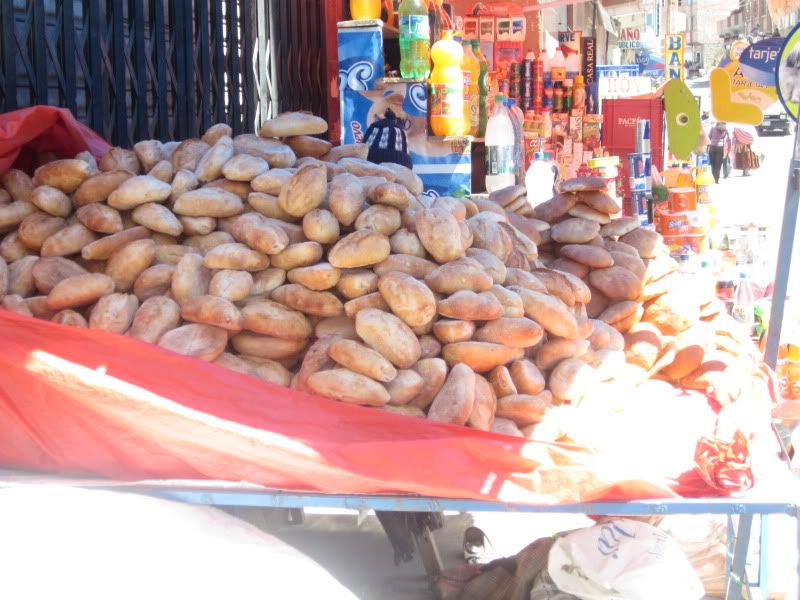
Rolls for sale
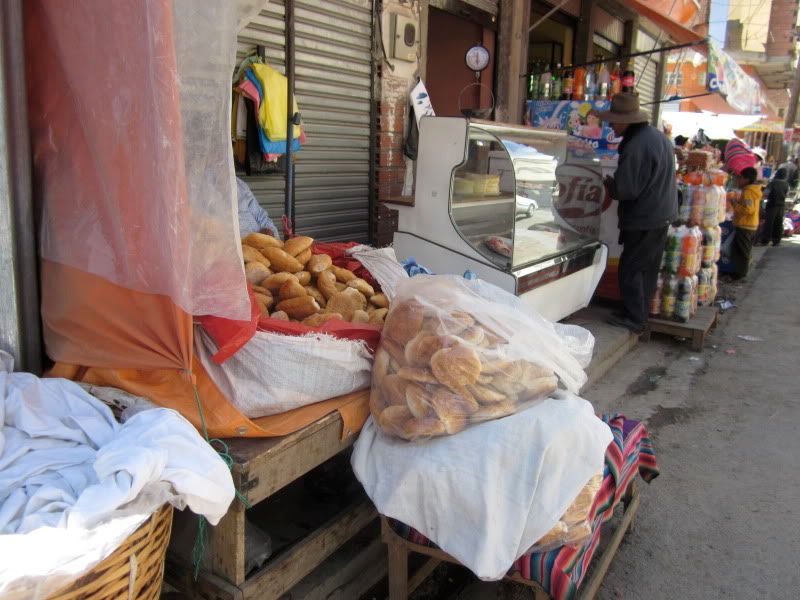
And more...
In addition to the rolls, I saw stores selling every sort of junk food. There was one store that literally sold nothing but soda. And, as you'll see, there was one lone fruit stand among the junk.
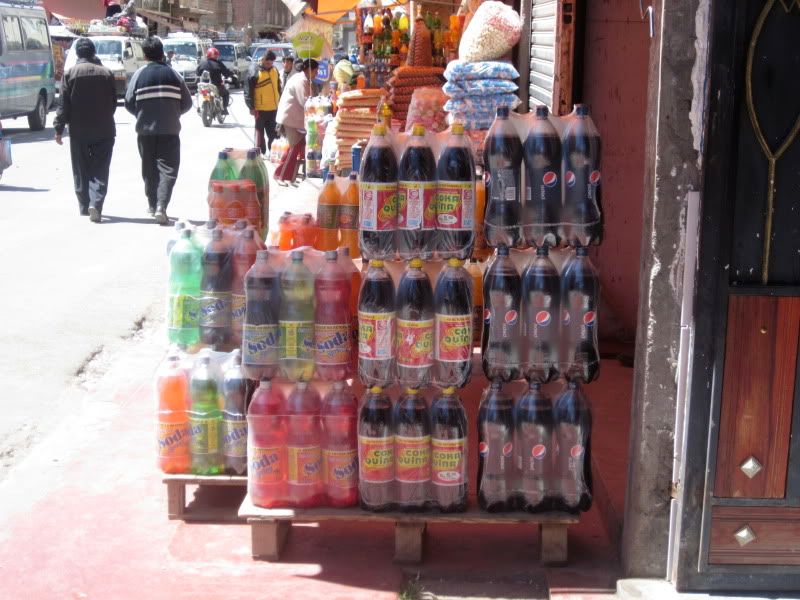
Soda
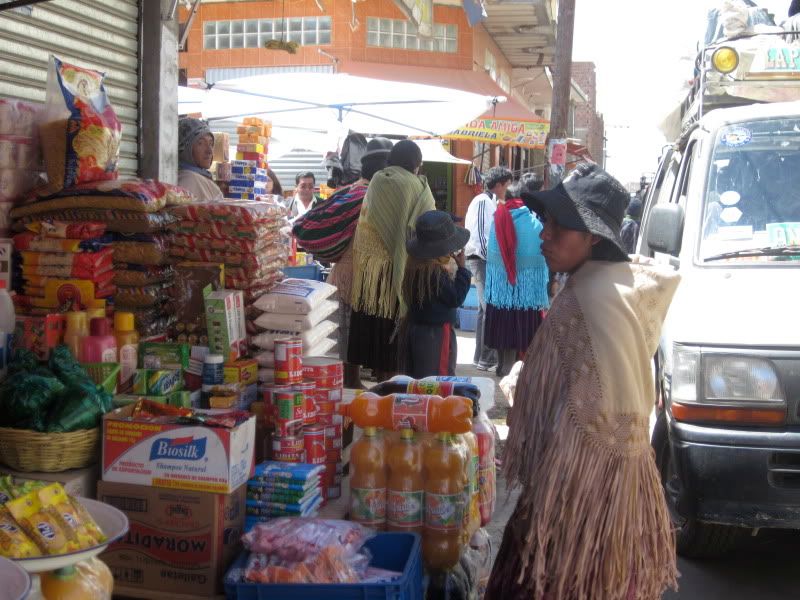
Junk

More junk
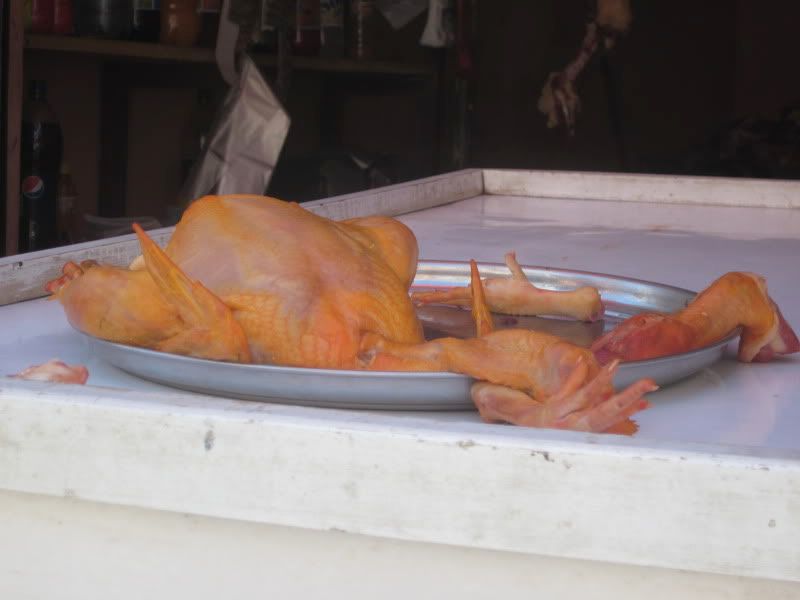
Want some chicken? No idea how long it's been sitting out.
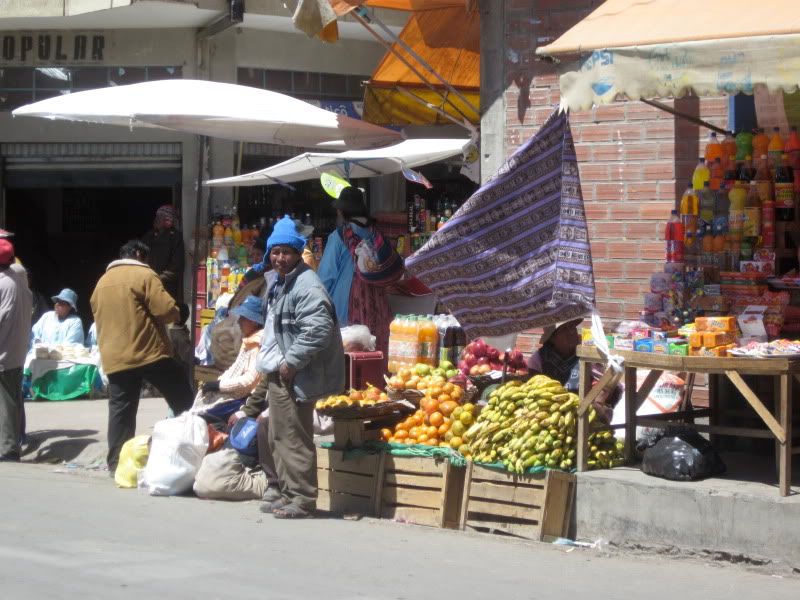
Fruit
Food was not the only type of aid Bolivia received from the U.S. during the Cold War. We also sent over massive amounts of agricultural aid. The introduction of "modern" farming with pesticides, fertilizers, and heavy machinery made an impact still apparent today. Tractor after tractor rolled through the main street of Achacachi while we were there. Across from where we parked, I spotted an agrochemical store and immediately got to work taking pictures. (The store also advertises that it sells seeds, although I didn't see any.)
In the front of the store, there were large bags of nitrogen fertilizer as well as a spray application device that I've seen used in Latin America to apply pesticides. I asked if people used any protective clothing while they sprayed pesticides, and the people in the store told me no. (However, I did not see anyone applying pesticides in Bolivia, so I cannot verify this.)
Inside, there was a shelf of pesticides and animal drugs behind the counter. The products included: Ridomil, Monitor (Methamidophos), Lorsban (Chlorpyrifos), Tamaron (Methamidophos), Baygon (Propoxur), AquaMaster, Bonanza (Trifluralin and naphthalene), Arena (Clothianidin), Malezil (Paraquat), Gramaxone (Paraquat), Bravonil (Chlorothalonil), Reamizona, Garrapata, and, of course, DDT. You can see a full list of the registered pesticides in Bolivia here. What is most shocking here is the DDT, not only because it's there and easy to get, but also because this is NOT a malarial region at all, so it's clearly not being used to control malaria. This is primarily a potato growing region.
Once we got to Santiago de Okola, we were able to discuss agriculture and the history of the Green Revolution with the farmers there. When I write about their agriculture, I will share what they said.
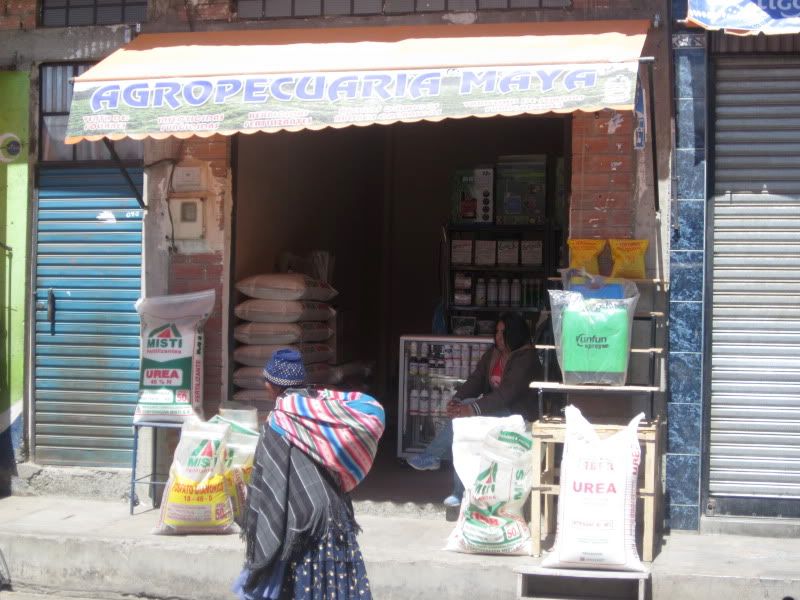
Your local agrochemical dealer
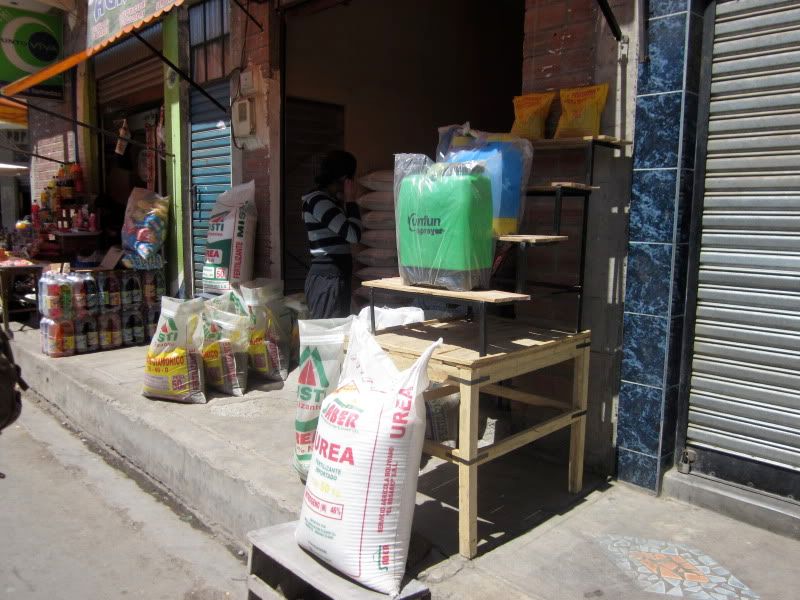
Need any pesticides? Fertilizer?
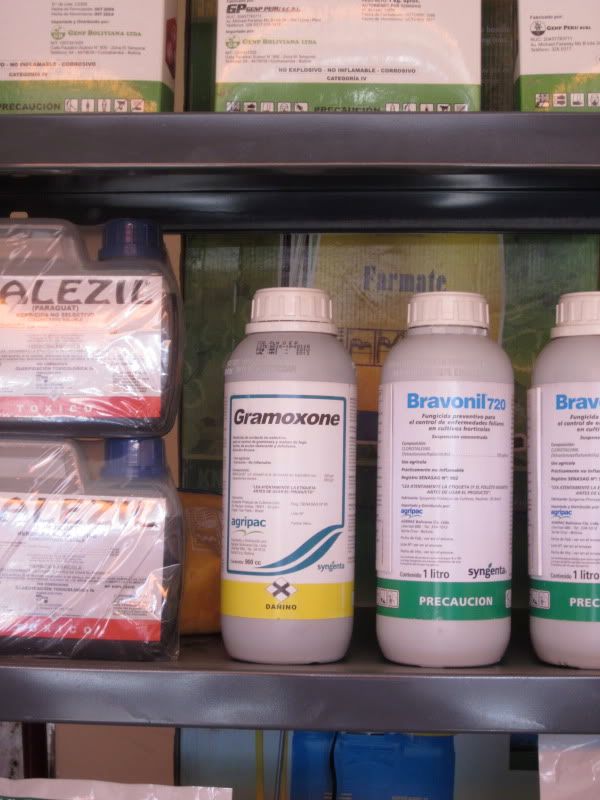
Paraquat (Gramaxone): 4 out of 5 suicidal farmers choose Paraquat! Fast acting on weeds AND humans.
No comments:
Post a Comment